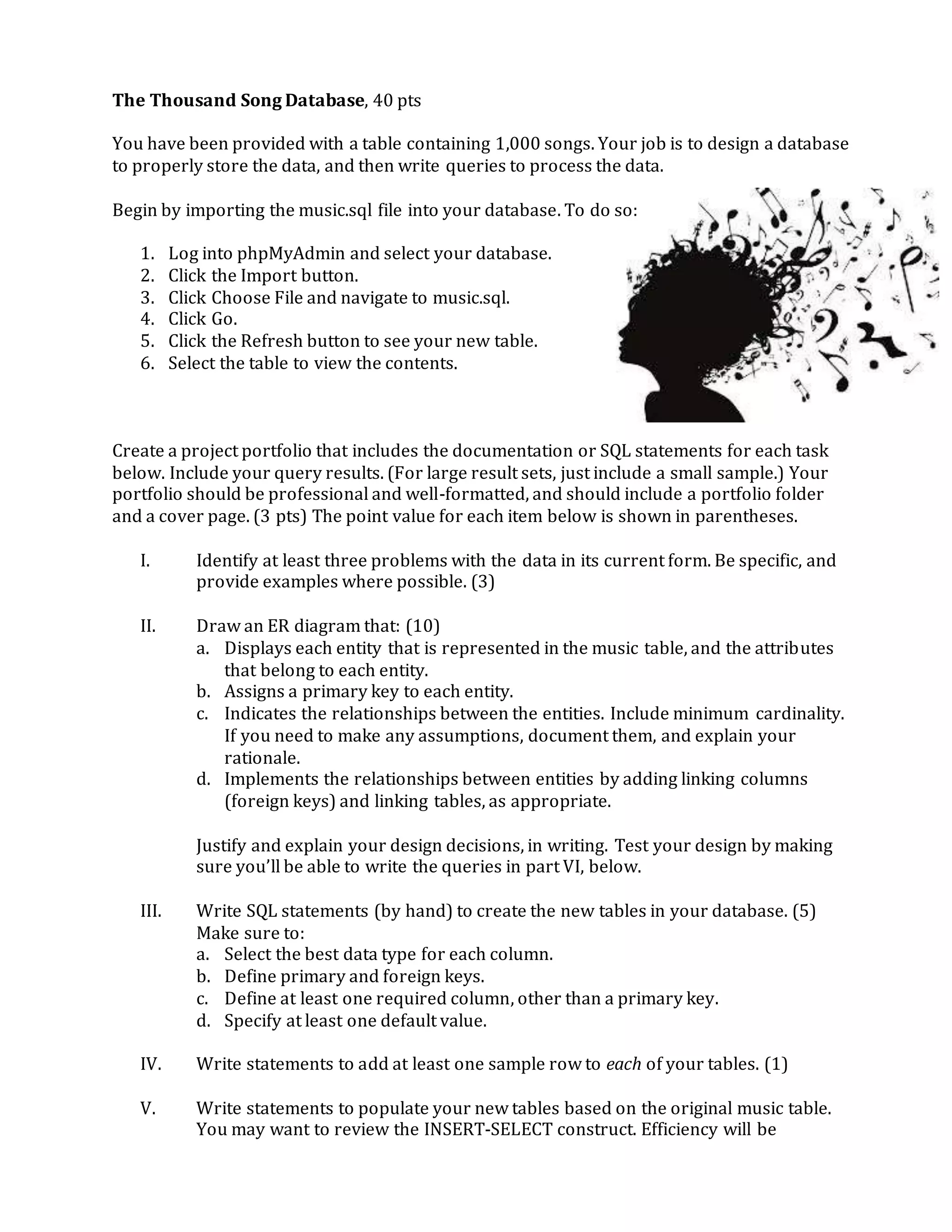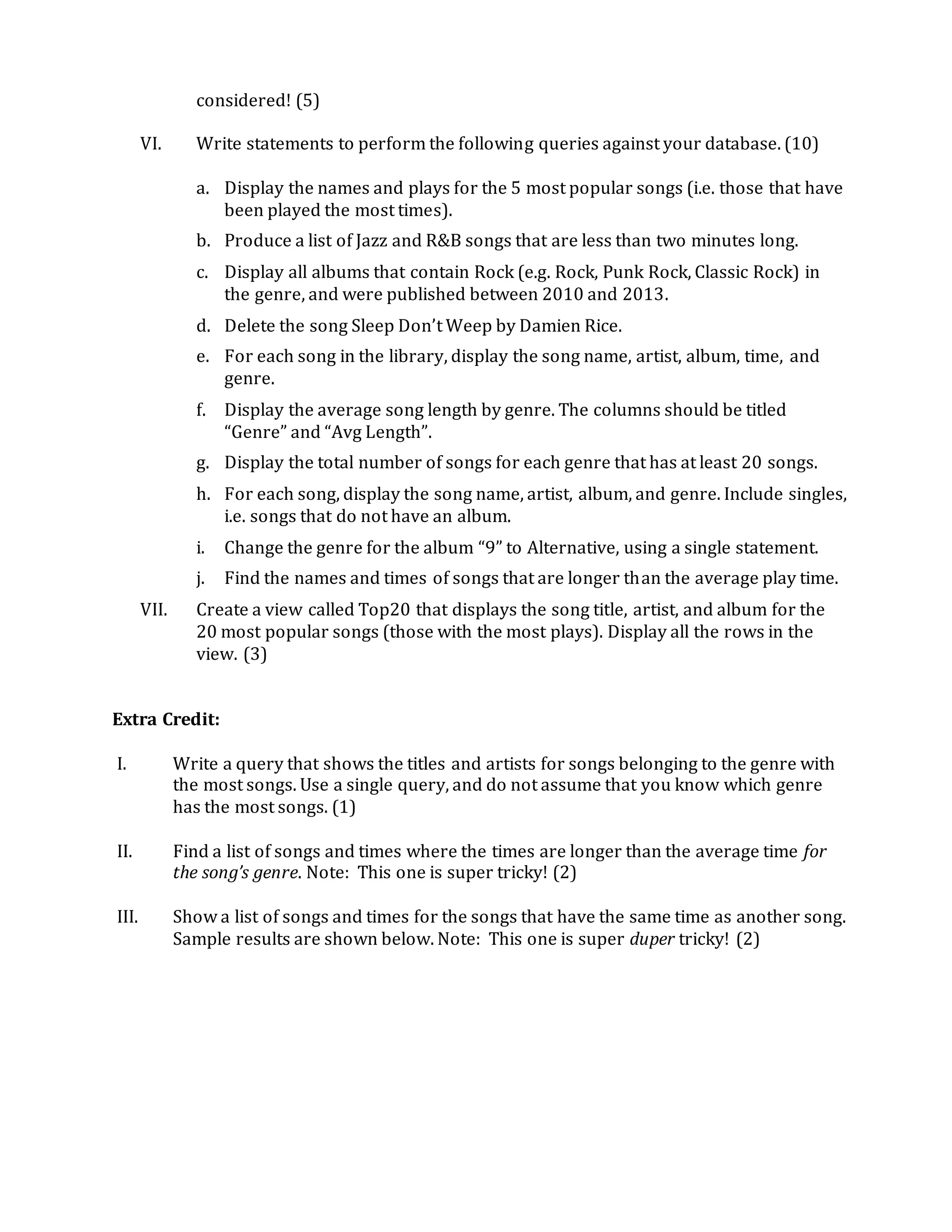The document describes a database project involving designing a database to store song data from a provided table with 1,000 songs. Key tasks include:
1. Identifying problems with the original data structure and designing a new ER diagram with entities, attributes, primary keys, and relationships.
2. Creating new tables based on the ER diagram and populating them with data from the original table.
3. Writing queries to retrieve and manipulate data, including finding popular songs, genres within time limits, albums within date ranges, and averages.
4. Creating a view and indexes to optimize query performance and securing the database with users and permissions.


